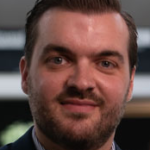
Jordy Tasserie
Bio
Dr Jordy TASSERIE is a neuroscientist and entrepreneur expert in Deep Brain Stimulation (DBS) and Magnetic Resonance Imaging (MRI). His studies combine both disciplines to develop new biomarkers of optimal neuro-stimulation to treat chronic neurological diseases.
He trained as a physicist and obtained a Bachelor degree specialized in waves and signal processing in 2014 before graduated from a Master of Science in medical imaging with honors and major of promotion two years later.
He completed his PhD in 2020 on functional neuro-imaging study (fMRI and EEG) of thalamic DBS mechanisms for the restoration of consciousness in a non-human primate model, under the supervision of Prof. Béchir Jarraya at the NeuroSpin center (Prof. Stanislas Dehaene, Paris Saclay University – France).
In 2021, he joined the Toronto Western Hospital in the functional neurosurgery department of Prof. Andres Lozano (University of Toronto – Canada) to study DBS mechanisms and develop neuro-stimulation therapies in movement disorders using functional MRI.
Since 2023, he is a research fellow at Harvard Medical School in the Network Stimulation laboratory of Prof. Andreas Horn at the Brigham and Women’s Hospital within the Center for Brain Circuit Therapeutics (Prof. Michael Fox, Boston – USA).
Abstract
Exploring the pathophysiologic structural functionality
Loss of consciousness is associated with the disruption of long-range thalamocortical and corticocortical brain communication. We tested the hypothesis that Deep Brain Stimulation (DBS) of central thalamus might restore both arousal and awareness following consciousness loss. We applied anesthesia to suppress consciousness in nonhuman primates. During anesthesia, central thalamic stimulation induced arousal in an on-off manner and increased functional Magnetic Resonance Imaging activity in prefrontal, parietal, and cingulate cortices. Moreover, DBS restored a broad dynamic repertoire of spontaneous resting-state activity, previously described as a signature of consciousness. None of these effects were obtained during the stimulation of a control site in the ventrolateral thalamus. Last, DBS restored a broad hierarchical response to auditory violations that was disrupted under anesthesia. Thus, DBS restored the two dimensions of consciousness, arousal and conscious access, following consciousness loss, paving the way to its therapeutical translation in patients with disorders of consciousness.